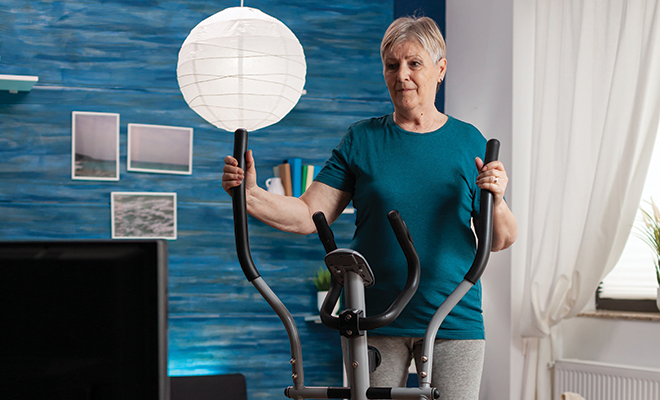
Staying Strong!
Are you aware that your peak muscle mass typically occurs, on average, when you are in your early 40s? From that point, muscle mass begins to decline; that loss will eventually lead to changes in your strength, mobility and ability to live independently.
In addition, loss of muscles mass can lead to a decline in your metabolic function. Therefore, it is highly critical to maintain your muscle mass for the sake of your overall health, as it plays an integral role in metabolic and hormonal function. When maintaining muscle mass is neglected, it can increase your risk of obesity, diabetes and heart disease. By ignoring age-related muscles loss, you can spiral into numerous health challenges in terms of reduced strength and accelerated aging, along with an increased risk of chronic diseases.
Surprisingly, you can lose on average about seven pounds of muscle per decade. Some research has also revealed that after the age of 50, up to 5 percent of strength loss can also occur. However, you can intervene and address muscle loss, and the best way to do that is through regular exercise.
It’s no secret aging takes a toll on our bodies. It goes all the way to the cellular level; the damage incurred by cells in older muscles can be quite severe, as they are not able to regenerate as easily as they once could and soon become weaker as the mitochondria, which are responsible for creating energy for muscle cells, diminish in vigor and number. That’s where exercise comes into play, as it can mitigate some of the effects of aging by improving the cellular health of your muscles. This in turn slows down the loss of muscle mass while simultaneously improving bone density.
One type of exercise that’s beneficial is interval exercise. Researchers at the Mayo Clinic found study participants above the age of 64 realized notable benefits from high-intensity interval training, also known as HIIT. The participants saw better increases in healthy mitochondria than in those participants who worked out with weights alone.
HIIT exercise involves alternating periods of high-intensity exercise with periods of rest or low-intensity exercise. As an example, using a scale of 1 to 10, with 10 being the greatest effort you apply, you would run at a level 8 for 2 minutes and then at a level 1 or 2 for 30 seconds, repeating this for a number of cycles. You can then adjust the length of those periods of intensity and rest depending on how fit you are and how much time you have to devote to exercise. It’s also advisable to incorporate some weight training into your fitness routine; this is what builds muscles mass, which keeps your metabolism in check and also helps you burn more calories while you are at rest.
You may also want to consider some body weight exercises, which don’t require any special equipment and still allow you to improve bone density. The key is to find something you love to do and keep at it. There are numerous body weight exercises that might be appealing to you, including squats, planks, walking, hiking, tai chi, yoga, climbing stairs, lunges, push-ups and even dancing. Further, if you’re not interested in using dumbbells as a form of weight resistance training, consider the power of stretchy resistance bands to add strength to your muscles. These are made of latex or rubber and will build strength as you perform specific exercises targeting certain muscles groups. They can even be used while sitting.
In addition to exercising, it’s important to properly fuel your body through the consumption of protein, complex carbohydrates and fiber. Keeping hydrated is a highly important part of building muscle mass, as it allows your body to absorb and metabolize the nutrients you are consuming from your diet.
As with any new exercise program, it is important to consult with your doctor first. Don’t attempt to do too much too soon, or you might risk injury. Be sure to start with lighter weights first and then work up to heavier weights. Be sure to learn proper form and pacing before transitioning to the heavier weights.
It can be tough to face the realities of aging, and individuals in the afternoon of life need to approach nearly everything differently than they did when they were younger. Building muscle is no different. Whether your training regimen includes strength training or resistance training or a combination of both, it is possible for you to increase muscle mass when you take exercise and nutrition seriously. Remember to start slowly and take the time to do these exercises realistically and safely. After all, you can’t participate in your new exercise program if you are sidelined with an injury!
Sources: fitness.mercola.com, fitness19.com, businessinsider.com and seniors.lovetoknow.com.







